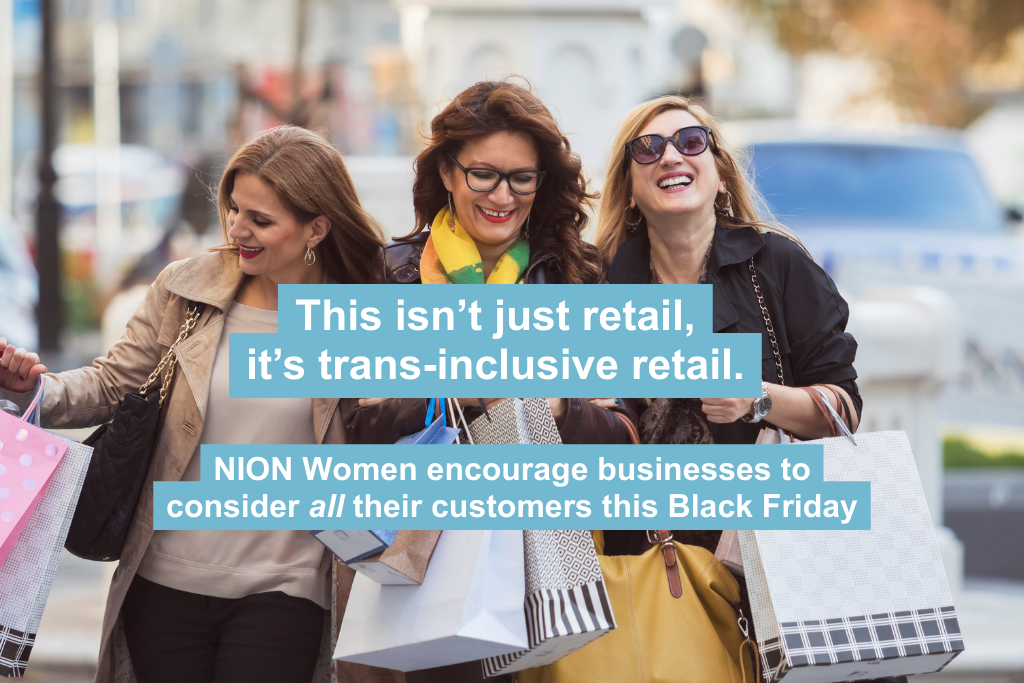As we hit Black Friday and enter the busiest period in the retail calendar, we are mindful that not everyone gets to enjoy the same shopping experience. From online accessibility to in-store accommodations around quiet shopping hours and adaptive clothing, many brands are considering who they are reaching, and who might feel left behind.
For the trans community, this comes with the added concern of not knowing what might face them in changing facilities, toilets and when asking for assistance – as we saw recently with the now debunked example that faced one M&S employee, and led to wall-to-wall media coverage.
As the UK government reviews the recommendations from the Equalities and Human Rights Commission, and is faced with decisions with profound implications such as:
- who gets to access which public, leisure, event and office spaces,
- how this will all be policed, and
- the impact the measures will have on the general public,
…the trans community is left in a prolonged state of uncertainty.
We have already heard shocking anecdotes about people avoiding eating and drinking, so they don’t need to use public conveniences, and stories of women – both transgender and cisgender – being asked to leave spaces based solely on their appearance. To think people won’t be able to access goods and services for fear of staff or other citizens challenging them, is deeply troubling.
We have seen a range of responses from organisations in the wake of the Supreme Court ruling, from brands quickly moving to implement exclusionary policies in relation to single sex spaces, to those who have held their nerve in the hope of greater clarity, and those more inclusive organisations who have taken a step forward and embraced their commitment to inclusivity. One thing that is certain is that each organisation’s response tells the world exactly what their position on inclusivity truly is.
But it’s not just the trans community and their loved ones who are watching to see how brands decide to engage in this conversation. This is a litmus test for corporate values that resonates far beyond any single demographic.
In recent months, we have been pursuing a calm, compassionate conversation with women around trans+ inclusion, providing a simple mechanism through which they can demonstrate their inclusive stance – should they choose to do so. Over 65k women have pledged their support so far – and that number continues to grow daily.
They are everyday women actively watching to see where the leadership is coming from – who is showing integrity and who is actively discriminating against this tiny minority which represents less than one percent of the population.
Here are some things we’d encourage all brands with any sense of social purpose to consider:
- Understand your customers – their experience and where your service might be more accommodating and inclusive
- Representation counts – any stock imagery, signage, labelling and campaigns should highlight the true diversity of your audience
- Share your policies openly – people need leadership and guidance on how to interpret the Supreme Court ruling and subsequent interim guidance issued by the EHRC
- Train your staff – ensure teams understand both the legal requirements and the human impact of exclusionary practices
- Listen to affected communities – before implementing policy changes, consult with trans employees and customers
- Stay true to your brand values – if you’re inclusive, if you celebrate Pride, and if you want to show your staff what that means in practical terms, understand that any changes that might end up excluding or alienating minority groups may have far greater implications than you might have realised.
This Black Friday, and beyond, shoppers are looking for brands that lead with integrity. The question isn’t whether to be inclusive – it’s whether you’ll be counted among those who acted with courage when it mattered.
